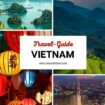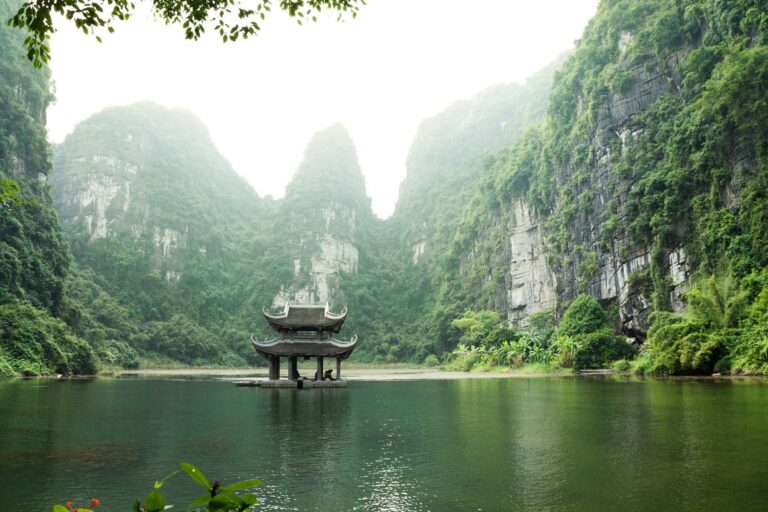
When most people hear the name ‘Vietnam,’ they think of its devastating history, rice noodles, and a place similar to Thailand (or so my father seems to believe).
While there is no denying the rough past of the country, that almost every meal does indeed contain rice, and that it is close to Thailand, Vietnam is a unique world unto itself.
Every corner flourishes with an array of jungle plants, whether you’re situated in the cityscape or immersed in a more natural setting. Lanterns swing gently in the breeze, clinging to trees or lamp posts, making for a delightful decoration by day and a soft illumination of the surroundings at night.
The aroma of freshly cooked Pho – a stable breakfast food consisting of either beef or chicken, greens, and, you guessed it, rice noodles – fills the air.
My partner and I decided to visit Vietnam on a whim. We had a handful of friends and family members who had visited, and every single one spoke of its magic.
We had to experience it for ourselves.
Wanting to escape the winter months of our home country, South Africa, we ventured to the vibrant land of Vietnam on an epic one-month adventure that took us from the mountainous regions of the North and through the ever-changing, diverse landscapes of the countryside to the bustling metropolis of the South.
This is our story.
Exploring Vietnamese Cityscapes
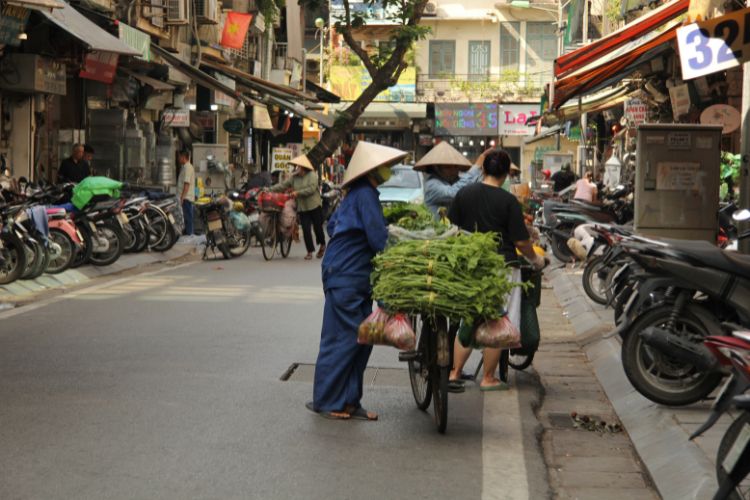
We began our journey in the cultural yet energetic hub of Hanoi. The heat smacked us as we disembarked and made our way through the network of winding roads to our accommodation.
While we’re pretty used to 30-degree heat, humidity is a foreign experience to us. Beads of sweat snaked down our faces as we wandered the streets of the iconic Old Town.
The heart of Hanoi is a rich blend of ancient customs and the blur of modern motorbikes. As we quickly learned, biking is the way to travel. The traffic is infamous for a reason. But as dangerous as it looks to outsiders, there is a system to the madness.
Everything moves in a constant state of flow, dodging one another at every turn, with barely any halts or hesitations. In fact, uncertainty is where the danger lies.
Adventures in Hanoi
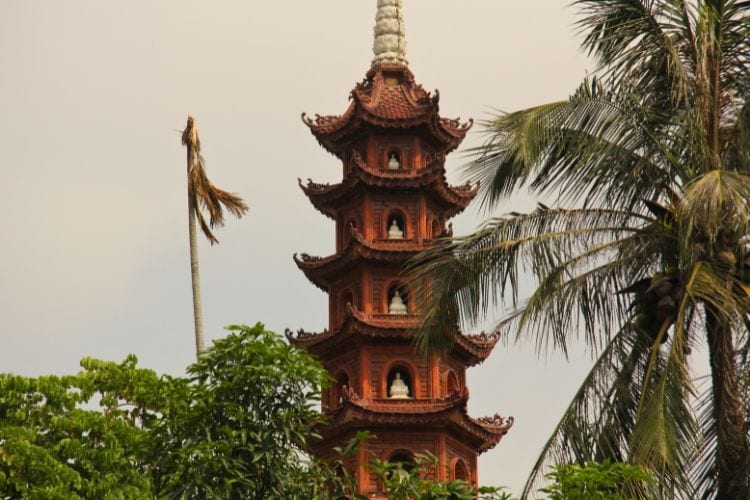
However, once you learn the rules of the road, navigating it becomes a fun adventure. We first followed the local old ladies crossing the road and gleaned that slow and steady wins the race.
If you’re moving across the lane, the motorbikes will simply swarm either side of you, creating an invisible bubble while you glide to the sidewalk. If you’re driving, hooting is your unaggressive way of saying, “Hey, I’m here, just letting ya know.”
We spent a few days immersed in this world, exploring the historical landmarks honouring the country’s Confucian heritage, Buddhist beliefs, and Hindu influence. We sampled the heralded salted caramel, condensed milk, coconut, and egg coffee (the coffee culture here is on another level).
We wandered the tree-studded streets, past hipster cafes and cocktail lounges, and sat on low-standing chairs while the locals enjoyed their morning tobacco pipes.
Hanoi was the ideal space for us to merge into this new world. After a pleasant taste of city life, we were ready to experience the countryside.
Ocean and Caves
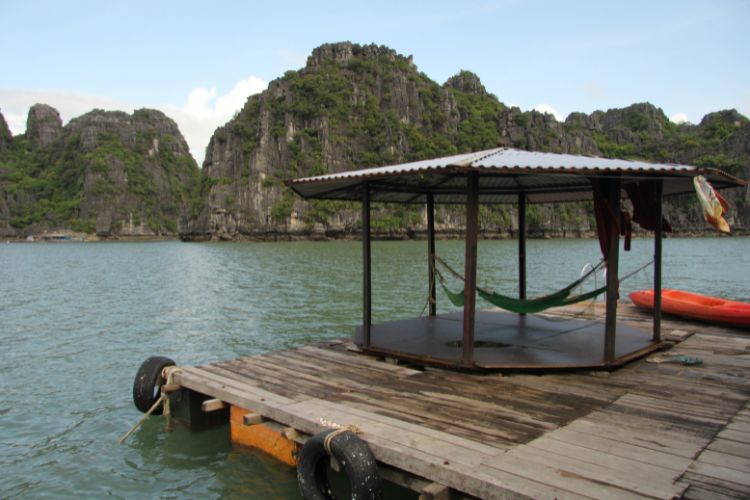
A three-hour bus drive took us to the shore of Ha Long Bay, one of Vietnam’s most prolific destinations, and it’s not difficult to see why. Mammoth limestone pillars rise from the water depths into the sky.
Cloaked with verdant foliage and armoured with craggy outcrops, these islands pepper the bay and make for one of the most awe-inspiring sights.
We took a rickety motorboat to the neighbouring bay called Cat Hai. With little to no tourist boats, it felt like we had this section of sea to ourselves. We stayed on a floating backpackers, sharing the space with ten others.
Our guide took us on two exhilarating tours: a 12-kilometre hike on one of the islands and a kayak and cave tour beneath another island.
Breathtaking Cliffs
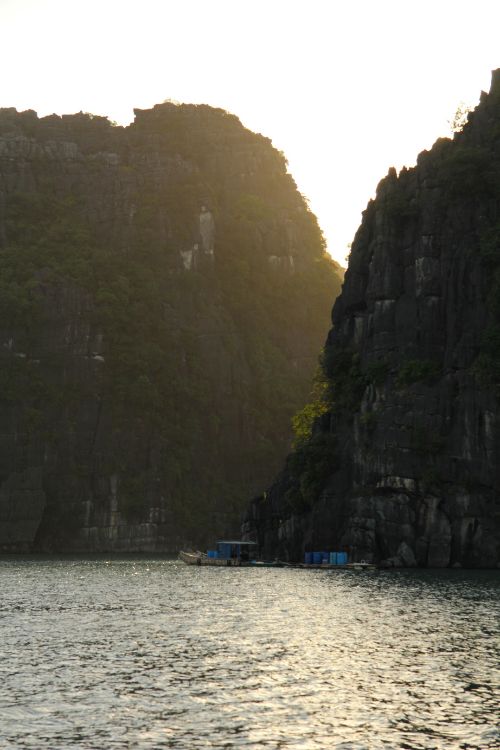
The trek took us through bamboo forests, under the webs of giant honey-hued spiders, and through stone-studded beaches. Our kayak journey to the cave entrance was margined by the famous limestone cliffs, and the destination happened to be within one of them.
Drawing the curtain of veiled foliage revealed the cave entrance, and we climbed within the largest cavity I’ve ever experienced. This giant cave is host to whole ecosystems and was once a shelter for members of the Viet Cong and refugees from China.
Between adventures, we submerged ourselves in our environment. Emerald waters sparkled in the sunlight as jellyfish meandered the waters below. Towering ocean mountains became a familiar backdrop to our every move, and we enjoyed observing them as much as we did exploring their lands.
After four nights of sweet conversations and delicious freshly cooked dinners of fish, rice, and veggies done in various ways, we said our goodbyes. We knew this was just the start of our journey, but we already felt like we experienced the highlight.
The Mountains and Jungles of Vietnam
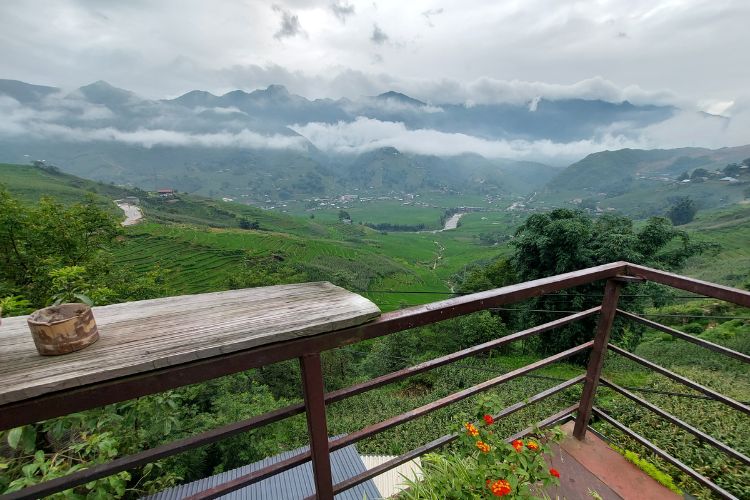
From the sea to the summits, our next destination was the hilltop region of Sa Pa. High into the heart of the Hoàng Liên Son Mountain Range, this picturesque village is a dazzling contrast of colour against the vibrant green surroundings.
We made our way via train and took a taxi past the village to our accommodation – an idyllic homestay enrobed by rice paddies and trekking trails. As keen hikers, we were excited by the prospect of exploring an entirely new realm of nature.
Unfortunately, the weather had a completely different plan for us. It rained non-stop our entire four days here, and we were forced to meander the town on foot and motorbike, stopping for traditional drip coffee and ginger tea.
More often than not, things don’t go as planned. You simply have to accept and adjust and let the chips fall where they may. While we couldn’t embark on the hiking journey we wanted, we found adventure in the culture and people who call this verdant pocket of Vietnam home.
An all-day bus ride took us to Phong Nha, the land of unspoiled jungles and Earth’s most extensive cave systems. Here, the sun was shining, and we joined a full-day guided trek that led us along snaking pathways, past bomb craters, and into the core of the sprawling wilderness.
Elephant Cave
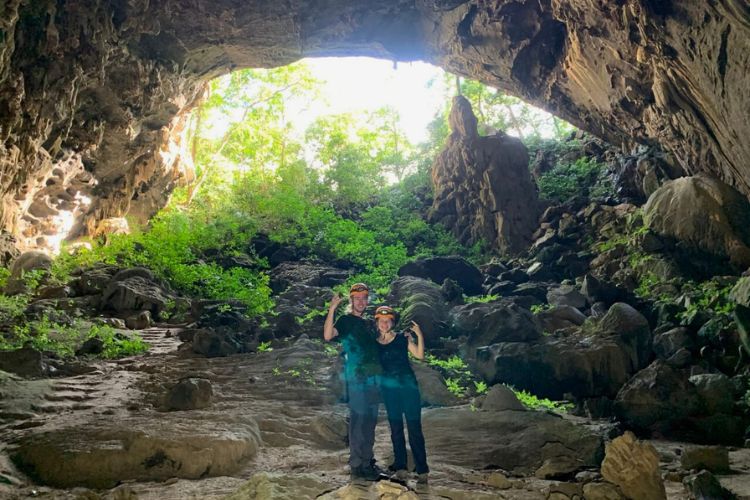
Armed with helmets, heavy-weight boots, headlamps, and puffy life jackets, we were guided into our first cave. The way in? Swimming. Our lifejackets kept us upright as we floated deeper into the cave.
The piercing sunlight streamed through the cave entrance, but it disappeared as soon as we turned a corner. Only the light from our humble torches illuminated the stalagmites and tites surrounding us and the hub of huddled bats above us that nest during the day.
The second cave we explored was aptly named the Elephant Cave. The stalactite formations seemingly spilled into sculptures of trunks and tusks, mimicking a large herd of gentle giants guarding the mountain cavity.
We transversed the narrow ledges that margined the cave under bomb-studded skylights and past relics of war-torn families that sought shelter within the cave.
We were awe-struck by the merge of ancient natural wonders and somber reminders of humanity’s violent tendencies—a conflicting yet powerful experience to end our venture in the North.
Motorbiking and Beach Chilling
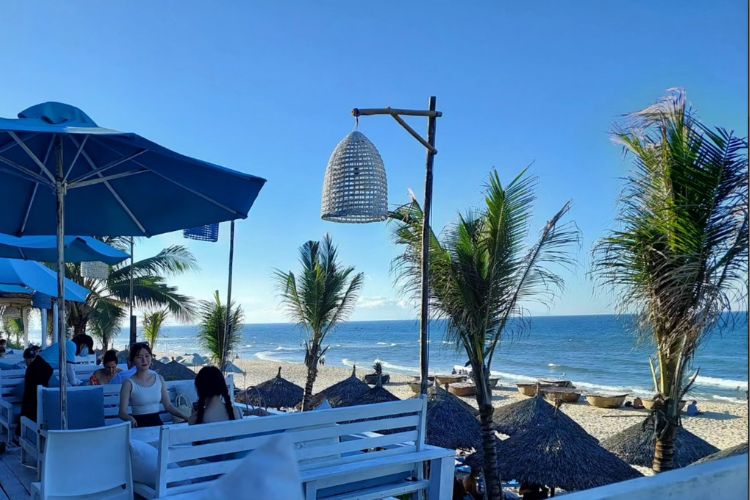
A stop in Hue brought us to the centre of Vietnam. Our next leg was a full-day motorbike journey through the undulating Vietnamese landscapes and over the renowned Hai Van Pass, a mountain road bracketed by seascape and emerald foliage made famous by Top Gear.
We revived ourselves with an iced coffee and hit the road, leaving the morning hustle and bustle of the charming streets of Hue city and onto the open road.
While the journey was a little over 150 kilometres long, we took a leisurely eight hours to complete it. We were first mystified by the iconic landscape of the wide-reaching rivers dotted with fishing boats, apon which bobbed traditional Vietnamese hats.
A stark contrast of green neighboured the harbour, peppered with more hats as the workers harvested the myriad rice paddies. We witnessed the scene in silence against the backdrop of silhouetted mountain ranges.
The road led us past forests and waterfalls, through a town encircled by the largest cemetery in the world, past ocean shorelines, over dragon-shaped bridges, and finally, over the breathtaking mountain pass.
On the one side, a smooth set of bends canopied by jungle trees, and over the summit, a dramatic reveal of rugged coastlines and Da Lang city far, far below.
As the evening beckoned, we zoomed into the enchanting town of Hoi An.
The Beautiful Town of Hoi An
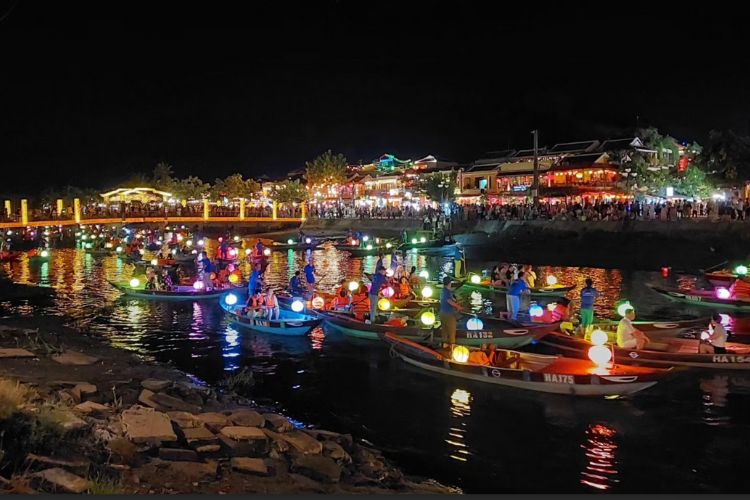
We awoke to the soft hums of the neighbourhood coming to life, and the gentle sea breeze tickled our noses. The beach was a five-minute walk to the right, while a 10-minute motorbike drive to the left was the captivating old town of Hoi An.
We spent one week meandering the rustic yet spellbinding streets, all studded with local, handmade wares. Tailors, leatherwork, and crafts are on display, each as charming as the last. Skilled woodworkers chip away at blocks of bamboo to produce impressive sculptures of Buddha and smiling Vietnamese faces.
Women selling cool tea with lotus flowers beckon from their mobile stalls while the rich aroma of the unparallelled drip coffee wafts from trendy cafes.
As the sun dips below the horizon, the town transforms into a dazzling display of colour and light. The Night Market is a menagerie of street food, vendors, and delightful bars that spill onto the sidewalks.
Music reverberates from the surrounding venues, while peace can be found in the warmly lit alleyways that boast delightful shopping of all kinds.
Hoi An provided us with a space for rest and rejuvenation. It was the perfect balance between traditional Vietnamese life and the pleasantries of the modern day, the best place to pass over into the South.
Vietnam’s Capital, Ho Chi Minh City
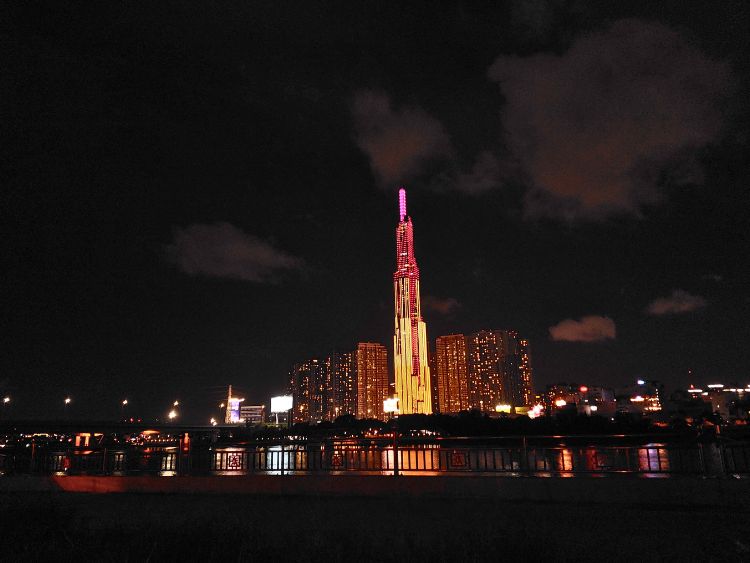
Our last mission was a flight to the capital, Ho Chi Minh City, formally known as Saigon. The difference between Hanoi and Ho Chi Minh is stark. You can feel it in the atmosphere. Skyscrapers soar into the clouds, city streets heave with hawkers, and motorbikes litter the roads in overwhelming numbers.
Designer shops flank the sidewalks, sitting below large posters promoting communism.
But hidden within the metropolis are secrets of the past. The American War Museum is a grim reminder of the horrors that held this country captive. But across the road, a manicured park brings together people of all ages.
Elderly men bring their caged birds to learn songs from one another. Middle-aged women play foot badminton with huge smiles on their faces. Families hold one another while enjoying a pocket of peace under the trees.
As our trip came to an end, we found ourselves wandering the paths of a quiet neighbourhood, gazing lovingly at the sprawling jungles that bloomed out of every balcony and window.
We slowly sipped our last condensed milk coffee with tears clouding our eyes, and I knew in my heart that I could call this foreign place home.
This is a country that has triumphed over tragedy. Despite a dark chapter in its history, Vietnam’s spirit remains unbroken, and war does not define the people or place. To me, Vietnam is a place of hope, family, and goodwill.
Read More: Saigon Street Food at the Ho Thi Ky Market in Ho Chi Minh City
If You Go:
I recommend spending at least two weeks, preferably one month, to explore this country. You can begin your journey from either major city, but if we were to do this trip again, we would go from South to North Vietnam.
I highly encourage using a motorbike as your primary source of transportation within a destination. Vietnam is built for motorbikes, and this gives you the freedom to go when and where you please.
Always go with a guide if you want to embark on a hike or cave tour.
Read More:
Author’s Bio: Georgia Carter is a freelance writer and photographer from South Africa. She specialises in travel, adventure, and conservation writing. She has a fierce enthusiasm for storytelling and sharing her discoveries of cultures and significant sights from around the world. She has her sights set on South America for her next excursion.
- How to Plan Your Dream African Safari - July 18, 2025
- How to Visit Hawaii Responsibly: 10 Low-Impact Travel Tips - July 17, 2025
- Samaná: The Dominican Republic’s Lush Peninsula Where Silence Is Golden and So Is the Sand - July 17, 2025

